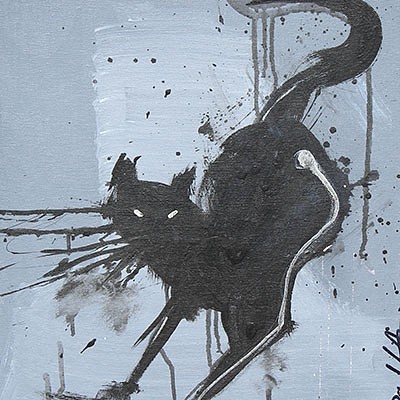Don Balke (NC, B. 1933) "Saber-tooth Cat"
Lot 425
Estimate:
$350 - $700
Absentee vs Live bid
Two ways to bid:
- Leave a max absentee bid and the platform will bid on your behalf up to your maximum bid during the live auction.
- Bid live during the auction and your bids will be submitted real-time to the auctioneer.
Bid Increments
| Price | Bid Increment |
|---|---|
| $0 | $10 |
| $100 | $25 |
| $250 | $50 |
| $1,000 | $100 |
| $2,500 | $250 |
| $7,500 | $500 |
| $20,000 | $1,000 |
| $50,000 | $2,500 |
| $100,000 | $5,000 |
| $250,000 | $10,000 |
About Auction
By Helmuth Stone Gallery
Jul 5, 2020
Set Reminder
2020-07-05 13:00:00
2020-07-05 13:00:00
America/New_York
Bidsquare
Bidsquare : July 5th Fine Art, Antique and Jewelry Auction
https://www.bidsquare.com/auctions/helmuth-stone-gallery/july-5th-fine-art-antique-and-jewelry-auction-5267
The July 5th Auction will feature Part II of the David Chang Snuff Bottle Collection, Important Chinese Porcelains from a private San Francisco California collection as well as original illustrations from the James A. Helzer Collection. Helmuth Stone Gallery helmuthstone@gmail.com
The July 5th Auction will feature Part II of the David Chang Snuff Bottle Collection, Important Chinese Porcelains from a private San Francisco California collection as well as original illustrations from the James A. Helzer Collection. Helmuth Stone Gallery helmuthstone@gmail.com
- Lot Description
Don Balke (North Carolina, B. 1933) "Saber-tooth Cat Perched on Rock" Signed lower right. Original Watercolor on Illustration Board.
Provenance: Collection of James A. Helzer (1946-2008), Founder of Unicover Corporation.
This painting was originally published on the Fleetwood First Day Cover for the U.S. 32c Saber-Tooth Cat issued June 8, 1996.
A formidable predator, the saber-tooth cat existed during the Oligocene Period, some 40 million years ago. It roamed the continents of Europe, Asia, Africa, North America and South America. Possessing a muscular neck, powerful front legs, a sloping back and a lynx-like tail, the saber-tooth cat was similar to many cats of the era. Yet this creature was distinguished by sharp, eight-inch-long, canine teeth resembling curved sabers. It was also equipped with huge jaws capable of opening to a 90 degree angle, making it easier to attack large prey. The saber-tooth cat feasted on thick-skinned animals such as the woolly mammoth, mastodon and ground sloth. Often compared to modern lions and tigers because of its predatory habits and its size, this creature is also referred to as the "saber-tooth tiger" and "saber-tooth lion." Scientifically, these names are not accurate, as the saber-tooth cat is a true cat, a member of the felid family Felidae, while lions and tigers are members of sub-families of felids. Around 8,000 years ago, the saber-tooth cat became extinct. An early theory about this phenomenon stated that the big cat's prominent teeth grew so large its bite eventually became ineffective for hunting and eating. However, scientists now believe that as the prey of the saber-tooth cat began to die out, the loss of its primary food source in turn led to the creature's own demise.
Image Size: 14 x 18 in.
Overall Size: 18 x 20 in.
Unframed.
(B15131) - Shipping Info
-
Helmuth Stone Gallery recommends obtaining shipping quotes prior to bidding on any items in our auctions. (For international shipments buyer is responsible for all duties, customs, and taxes, which are NOT included in the shipping price. In adherence with federal shipping regulations, Helmuth Stone Gallery will not alter any invoices for shipping). If you are interested in obtaining an additional list of local shippers, please email us and we will send one over. • PakMail o 941-751-2070 o Paktara266@gmail.com
-
- Buyer's Premium



 EUR
EUR CAD
CAD AUD
AUD GBP
GBP MXN
MXN HKD
HKD CNY
CNY MYR
MYR SEK
SEK SGD
SGD CHF
CHF THB
THB














